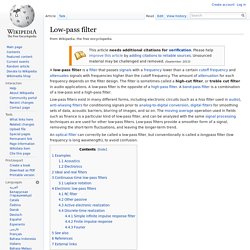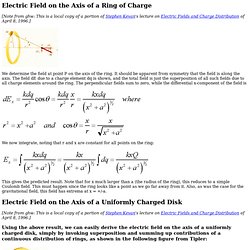

Electromagnetism: Magnetic Fields. Electomagnetism: Full Material Resouces. How energy is really transferred in electric circuits - surface charges and the Poynting vector. In this section we try and answer the question: 'How does energy really flow in electric circuits?

'. The answer is fairly standard university-level physics but is rarely mentioned in secondary school text books. Richard Feynman described the theory as 'mad' (though he agreed it must be true). Energy is transferred through empty space outside the wires The essential point is that energy is transferred through empty space around (and NOT in) the wires of an electric circuit via an electromagnetic field called the Poynting field, named after the 19th century English physicist John Poynting. The direction of the Poynting field depends on electrons distributed over the surfaces of the wires in the circuit.
I have to admit it's quite a way outside my comfort zone but here is the gist. Distribution of charge for an isolated conductor Imagine you have an isolated length of wire. Electrons are different from atoms of gas in an empty container. Low-pass filter. An optical filter can correctly be called a low-pass filter, but conventionally is called a longpass filter (low frequency is long wavelength), to avoid confusion.

Examples[edit] Acoustics[edit] A stiff physical barrier tends to reflect higher sound frequencies, and so acts as a low-pass filter for transmitting sound. When music is playing in another room, the low notes are easily heard, while the high notes are attenuated. Electronics[edit] In an electronic low-pass RC filter for voltage signals, high frequencies in the input signal are attenuated, but the filter has little attenuation below the cutoff frequency determined by its RC time constant.
Through the Wormhole - Wave/Particle - Silicon Droplets. Doc Physics - Single Slit Diffraction is like getting surprised by a text you just sent yourself. Chapter05_Capacitance _Dielectrics_revised_jwb - guide05.pdf. Electric Power. Ring of charge. Electric Field on the Axis of a Ring of Charge [Note from ghw: This is a local copy of a portion of Stephen Kevan's lecture on Electric Fields and Charge Distribution of April 8, 1996.]

We determine the field at point P on the axis of the ring. It should be apparent from symmetry that the field is along the axis. The field dE due to a charge element dq is shown, and the total field is just the superposition of all such fields due to all charge elements around the ring. The perpendicular fields sum to zero, while the differential x-component of the field is We now integrate, noting that r and x are constant for all points on the ring: This gives the predicted result. 15-1 Part 1. EMCh15-1 Part 2. EMCh15-1 Part 3. M & I II: The Field of Dipole Video 4 Part 3.
Phet E Field Simulation from pt charges. Change in Electric Potential Due to a Dipole. Calculus III - Spherical Coordinates. In this section we will introduce spherical coordinates.

Spherical coordinates can take a little getting used to. It’s probably easiest to start things off with a sketch. Spherical coordinates consist of the following three quantities. First there is . Next there is . Finally there is . In summary, is the distance from the origin to the point, is the angle that we need to rotate down from the positive z-axis to get to the point and is how much we need to rotate around the z-axis to get to the point. We should first derive some conversion formulas. And want to find . Is the same in both coordinate systems. We will be able to do all of our work by looking at the right triangle shown above in our sketch. Is and so we can see that, and these are exactly the formulas that we were looking for.
Note as well that, Or, Next, let’s find the Cartesian coordinates of the same point. Now all that we need to do is use the formulas from above for r and z to get, Also note that since we know that we get, Doc Physics - Ampere's Law Example for Solenoid. Electric Field due to a Uniformly Charged Solid Long Cylinder (ECF31A)